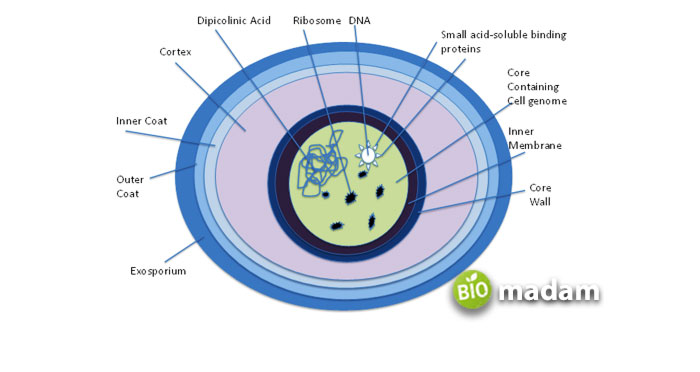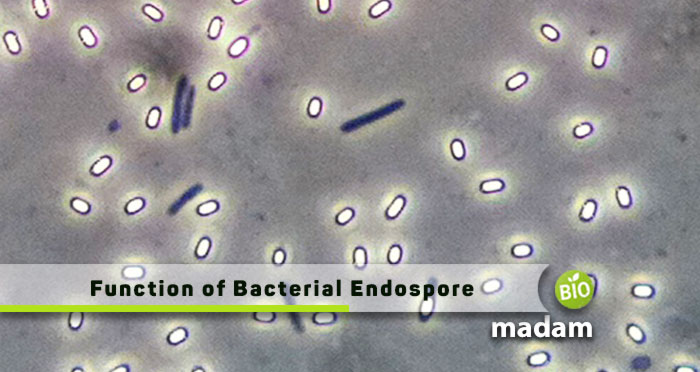Recently updated on February 21st, 2023 at 09:04 am
Humans and other organisms are designed in a way that they can survive in tough environments through different adaptations in the body. One such adaptation is bacterial endospores that help bacteria survive in an unfavorable environment. Endospores are commonly produced as a response to nutrient deprivation. They enable all kinds of bacteria to survive circumstances that the bacteria might not be able to live through otherwise.
Let’s discuss bacterial endospores and their function in detail.
What are Bacterial Endospores?
Bacterial spores are produced by bacterial cells to ensure the survival of the bacteria in overpopulation or nutrient-deficient conditions. They are highly resistant and help protect the cell’s genetic material (DNA) in extreme environmental conditions. Spores formed within the bacteria are known as endospores and are vegetative in nature. They are produced by a process called sporulation and are known as sporangia.
The most common endospore-forming bacterial species are Clostridium and Bacillus.
These endospores may be present in the center of the cell, terminal or subterminal positions. Bacterial endospores are different from spores in fungi. They sometimes wait until favorable conditions for germination or release through the cell wall of the cell. The high resistance of these endospores is of high importance as they are not easily destroyed by many anti-microbial.
Structure of Bacterial Endospore
The bacterial endospore comprises multiple layers with a thin outer covering known as the Exosporium. You can see a thick protein layer under a microbiology student microscope. It is known as the Spore Coat
Under this layer is a thick protein coat called the Spore coat. The spore coat is an impermeable layer, resulting in chemical resistance to many substances. It also contains different enzymes necessary for germination.
The third layer is made of spore peptidoglycan and is named the cortex. The cortex contains the spore cell wall surrounding the protoplast and helps resist high temperatures. It will act as the cell wall of the bacteria after germination. The protoplast contains all the bacterial cell organelles, including the nucleus, ribosomes, and dipicolinic acid. The Small acid-soluble proteins (SASPs) are endospore-specific and condense the DNA for added resistance. The chemicals present in the endospore aid in spore dormancy for as long as required.

Endospore Development
The development of endospores occurs in several stages and takes a different amount of time depending on the bacterial species. Typically, seven stages are involved in bacterial endospore development.
Stage 1: Axial filament formation
Stage 2: Forespore septum formation by inward folding of cell membrane
Stage 3: Immature endospore engulfment by a second membrane
Stage 4: Cortex formation between two membranes
Stage 5: Spore coat formation
Stage 6: Endospore maturation
Stage 7: Release of endospore (if)
Functions of Bacterial Endospores
Bacterial endospores are mainly responsible for the bacteria’s survival during unfavorable conditions. They help preserve the genetic material for a long time besides giving resistance to chemicals, heat, and radiation reducing the DNA degradation rate. In the absence of endospores, they might not be able to survive high concentrations of chemicals and high temperatures in extreme weather or climate conditions.
The Bottom Line
Bacterial endospores are one of the adaptive structures in bacteria, just like flagella. They help them survive in unfavorable conditions. They are formed in 7-steps, giving rise to a complex external sporangium. Their primary role is in preserving genetic material and facilitating germination when the environment is appropriate.

Anna has completed her degree in Pharmacy from the University of Hawaii. She is serving as a research assistant in a pharmaceutical company. She had a great interest in writing blogs, traveling to different parts of the US, and trying delicious recipes in her spare time.


Your writings are very impressive and educative. I really enjoy reading them. Thanks